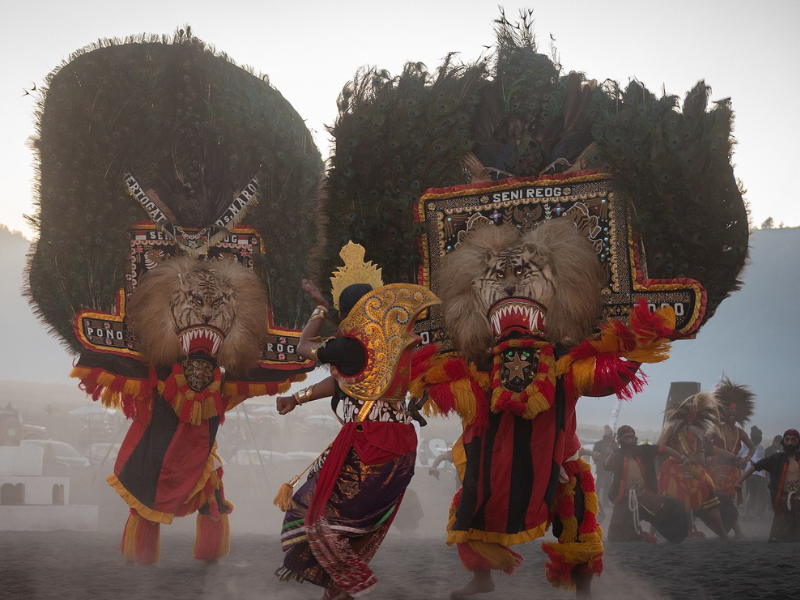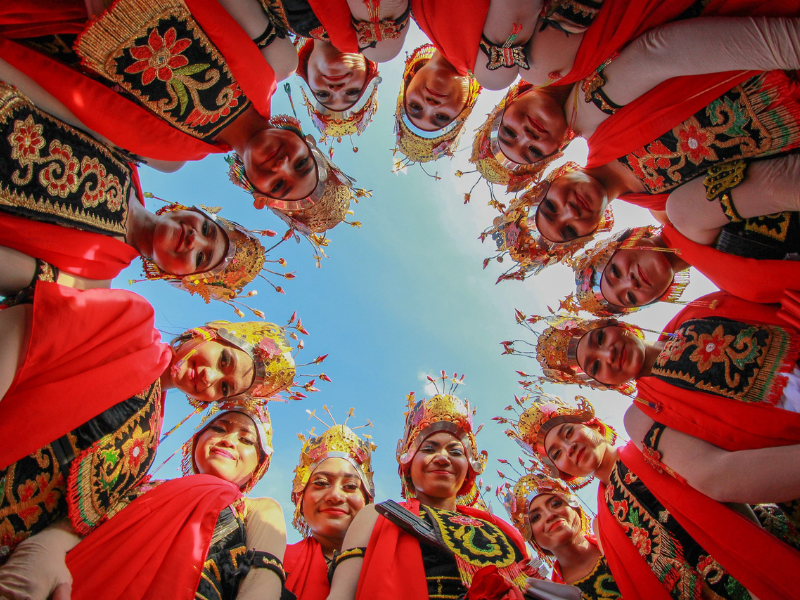Surabaya and East Java are rich in cultural heritage, with a variety of traditional performance arts that capture the essence of the region’s history, creativity, and vibrant community. These performances not only showcase the deep-rooted customs of the area but also bring its stories and folklore to life.
Traditional Performance Arts from East Java You Should Know
Jaranan

Jaranan is a traditional East Javanese dance performed with dancers who mimic the movements of a horse, usually performed during ceremonies or celebrations. The performers wear intricate costumes, often with painted horse motifs, and hold wooden horses that are decorated with colorful fabrics. The dance is accompanied by fast-paced music and is intended to represent strength, freedom, and the spirit of the horse, making it a mesmerizing and energetic performance that is still widely appreciated in Surabaya and East Java.
Ludruk

Ludruk is a traditional theatrical performance that originated in East Java and remains one of the region’s most iconic art forms. Performed in the Javanese language, Ludruk combines humor, storytelling, and music to depict everyday life and social issues. Often incorporating sharp satire and improvisation, Ludruk is a favorite among locals for its wit and relatable themes. This art form has a strong presence in Surabaya, where cultural centers regularly host performances.
Muang Sangkal

Muang Sangkal is a ceremonial dance traditionally performed in Madura, and its influence can be seen in Surabaya as well. This dance is a ritual of purification, often performed during important ceremonies to cleanse a person or community of bad luck. The intricate footwork, combined with the spiritual atmosphere of the performance, reflects the deep spiritual and cultural significance of this dance.
Remo Dance

The Remo Dance is an energetic and dynamic traditional dance performed as a welcoming act for special occasions. Known for its vibrant costumes, rhythmic footwork, and expressive movements, the dance is often accompanied by traditional gamelan music. Originally created to introduce Ludruk performances, Remo Dance has become a standalone art form that symbolizes the hospitality and courage of East Java’s people.
Reog Ponorogo

Hailing from the town of Ponorogo, Reog is one of East Java’s most spectacular traditional performances. It features massive, elaborately decorated masks, including the iconic Singo Barong (lion mask) that can weigh up to 50 kilograms. Dancers showcase incredible strength and endurance, balancing the heavy masks while performing intricate movements. Reog performances often include a blend of drama, music, and martial arts, making it a truly mesmerizing experience.
Tari Gandrung

Originally from Banyuwangi but celebrated across East Java. This dance symbolizes gratitude and love, with dancers dressed in elegant costumes performing to traditional gamelan music. Often performed during festivals and cultural events in Surabaya, Tari Gandrung adds a touch of elegance and romance to the city's traditional arts, making it a must-see for those exploring East Javanese culture.




 Alicia Putri
Alicia Putri
 Dec 13, 2024
Dec 13, 2024